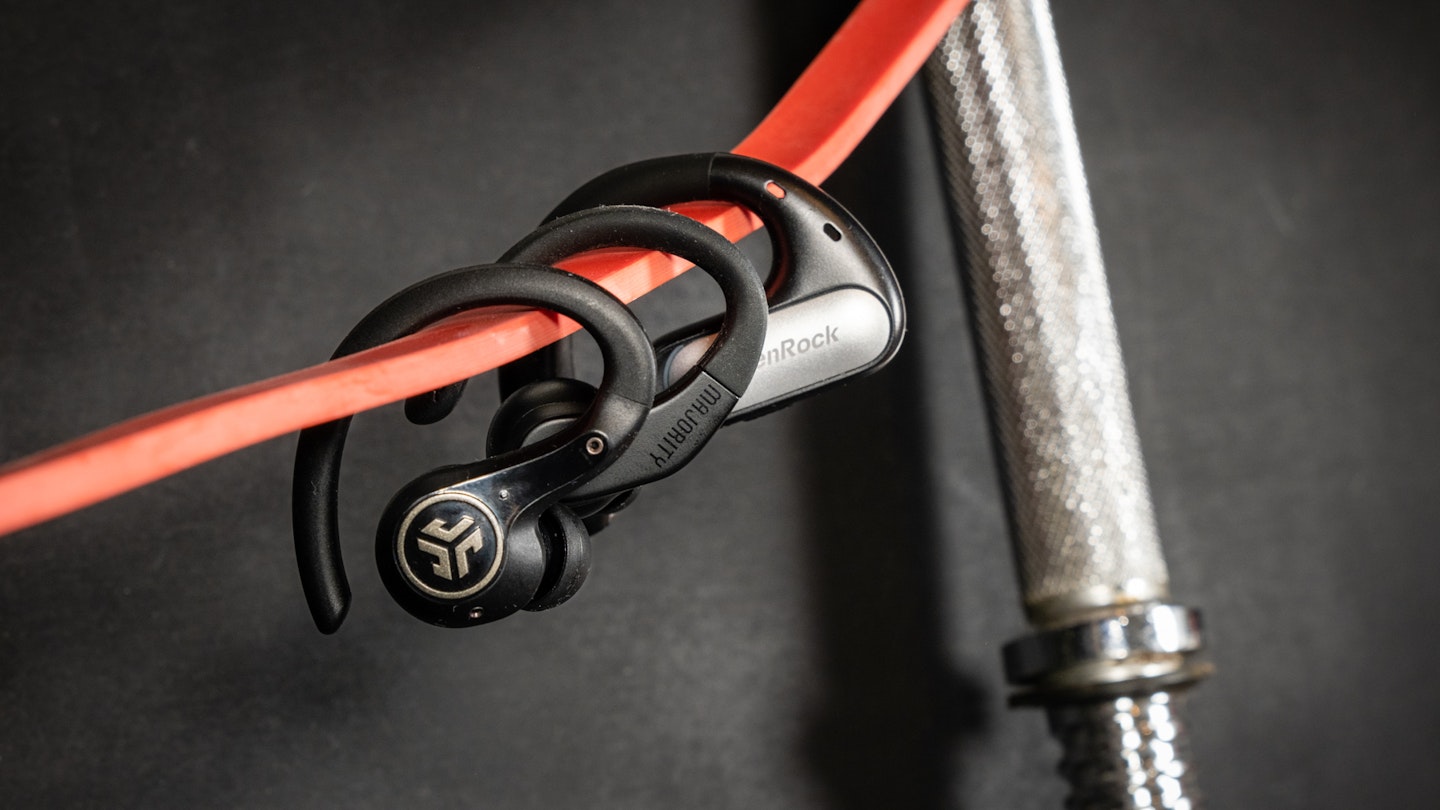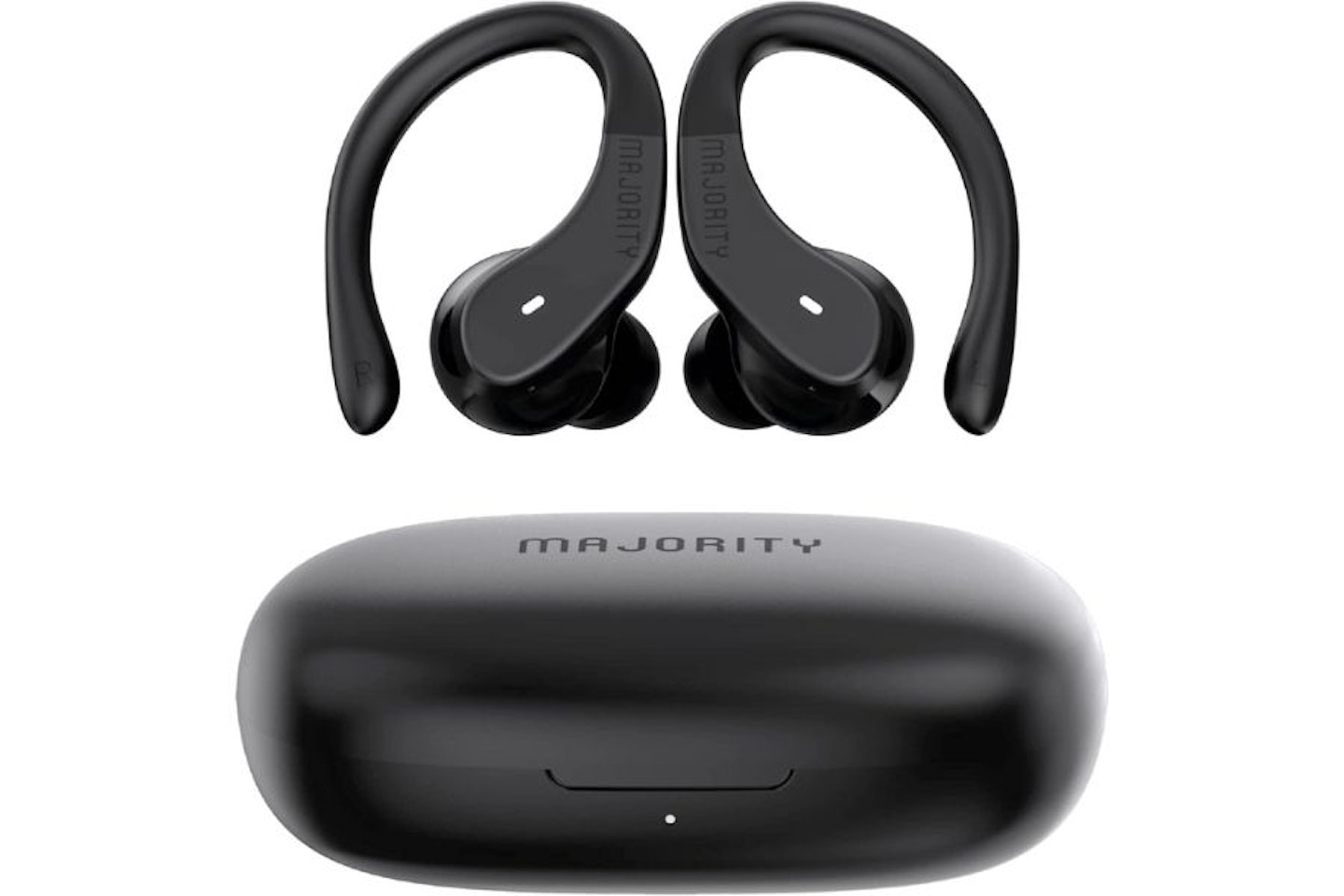If you love to listen to music while hitting the gym, you know how much ensuring you have the best headphones for the job matters. If this is the case, it's also fair to assume that you've considered hook earphones to ensure a consistent listening experience when hitting the weight room or heading for a run.
In recent years, the advent of true wireless earphones has freed us from the curse of cables, which had the uncanny ability to rip earphones away from us whenever we dared move. Yet, what wireless tech gives with one hand, it takes with the other - wireless earphones aren't always secure enough in the ear to stay in during a workout, particularly those with a dynamic element, such as explosive strength training or cardio. Here is where hooked earphones come into play - with a rubber-plastic loop that flows up and around the back of the ear; these earphones are designed to be extra secure to prevent them from falling from your ear.
There are many different hook earphones available out there, so I looked at three which offer a nice cross-section of the market to see which is best. Below, you'll find my hands-on group review of the Majority Tru Sport TWS, JLab Epic Air Sport, and OpenRock Pro.
The Majority Tru Sport TWS represents the budget end of the market, offering hook-security for a very fair price - but do they have the performance needed to deliver as a product?
Meanwhile, the JLab Epic Air Sport are a mid-range set of earphones, but they represent a high price mark for the hook design, which premium brands like Samsung, Sony or Apple tend to avoid.
Thirdly, a curveball for hooked earphone design and representing innovation in the group test - the OpenRock Pro. These are open-ear air conduction earphones which, like bone-conduction headphones, allow the wearer to maintain full situational awareness while enjoying their audio.
My test has taken place over three months, with each option being rotated in and out of my exercise schedule to really assess the strengths and weaknesses of each design. Now, let's dive deeper into the build, comfort, and battery life of each earphone to help you find the perfect fit for your needs.
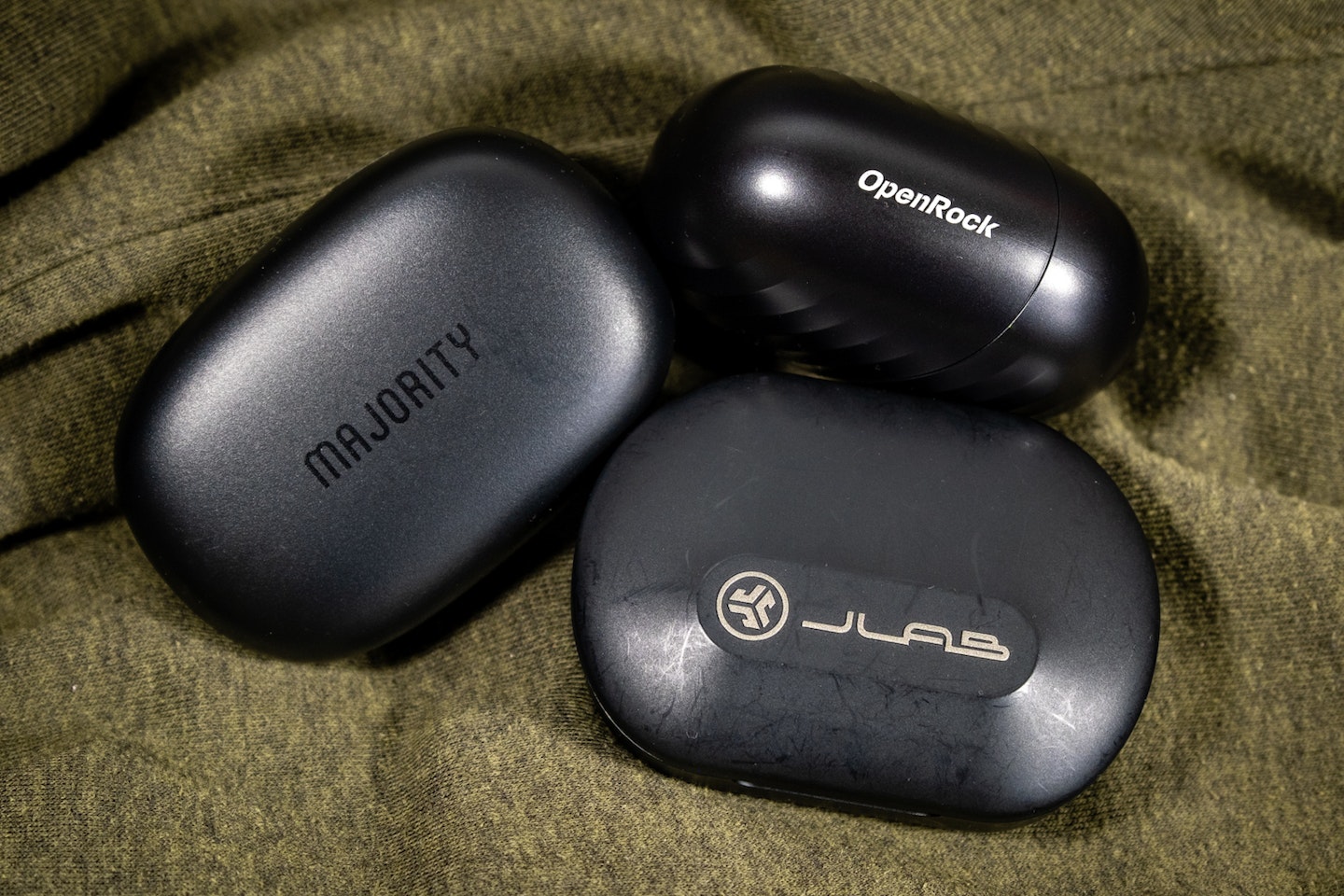
Build, comfort, battery
Majority Tru Sport TWS
The Majority Tru Sport TWS are the most comfortable earphones in the group test despite being the cheapest. The lightweight construction and use of flexible rubber hooks means they sit on the ears with almost no pressure and can be in for many hours without causing discomfort.
However, the light touch puts the Majority at a disadvantage when hitting the gym - they are a little loose, and even with different-sized buds tried, they never sat in the ear as tightly during movement. This meant I had more of the outside world leaking in and had to turn my music extra loud to compensate. If your gym is quiet or you only need headphones for outdoor workouts, this isn't an issue. But when the gym is at a peak, people are chatting and slamming weights, and I did find myself missing the sound isolation offered by the JLab product.
Though RRP is £42, you'll likely find these priced around £24 - which feels fair. The finish of both the headphones and case is budget and noticeably plastic-y but functional. The IPX7 rating is a nice bit of news, however, which offers some peace of mind against sweat and rain. Touch controls are onboard and were responsive throughout my testing.
The battery in the headphones will keep you with music for over seven hours and can be given a two-hour boost from half an hour in the case. It's decent for the price and more than enough for when you're exercising - unless you are some ultra-endurance addict.
JLab Epic Air Sport
The JLab Epic Air Sport is your typical example of over-ear hooked earphones. The hook is slender and rubberised, and the earphones themselves are angled to twist into the ear - both these features are intended to keep the earphones in place while moving. They do a decent job, and though getting them to fit just right can take a bit of practice, I found them reliably comfortable and stable in the ear. The secure fit helps isolate the sound, too, which deadens outside distractions without the need for Active Noise Cancellation (ANC).
I was disappointed with the plastic-y finish, which feels unrefined and cheap - the plastic is of a higher quality than the Majority and is notably heavier and thicker. Still, considering the price difference, I expected a more significant gulf. Despite my foibles, the IP66 offers excellent protection from the elements - both wet and dusty. Like the Majority, the JLab has touch controls onboard, which were responsive throughout my testing. They also auto-pause when removed from the ear, handy for chatting with a gym partner.
Special mention must be made here for the charging case, which can hold a frankly ridiculous 55 hours of additional charge over the 15 hours already carried by the headphones. Convert this to gym time, and if you work out for an hour five times a week, you won't have to recharge the JLab Epic Air Sport for over three months. And when you do need to, you won't need to find a cable, as the case has a USB charger built-in. Flawless thinking, JLab battery engineers.
ANC is a feature of the JLab Epic, which, when activated, reduces the overall battery closer to 50 hours. It is still impressive, though I found a tight ear fit, bass response and volume attained by the earphones to keep the world at arm's length and ANC offering little extra benefit.
OpenRock Pro
The OpenRock Pro earphones aren't small - the hooking loop that goes around the ear is bulbous, and the piece that holds the speaker over your ear is thick. When you first see them sitting in their case, they give you the distinct impression that they aren't going to fit well or be that comfortable. Thankfully, neither is true, thanks to the light 13g weight and malleability of the hook, meaning you can bend it to get the best fit for you. In my case, this allowed me to position them well around my glasses, which I wear all the time, without issue.
I will note that my partner, who has small ears, did find them loose, as she does with all hooked earphones - if you are someone with a history of earphone hooks not fitting, the OpenRock Pros are not your saviour.
The chunky build of the OpenRock Pro doesn't come without reason - they are carrying a decent amount of tech. This includes batteries that'll give 19 hours of life, a couple of microphones for voice calls and 16.2mm speakers. They are also IPX5 rated, so the sweat of a workout won't bother them.
During exercise, the OpenRock Pros are comfortable and stay in place for the most part - so long as you are upright. During a run, they might need to be adjusted every 20 minutes or so because of the jolting, but this is no bother and is a commonly encountered issue with all headphones. On a bike or walking, you won't have problems, and strength training, for the most part, is fine - though they do lose position when lying down for bench press. If you are doing more explosive workouts where you fling yourself around, like HIIT circuits or CrossFit, you'll have issues, and they will fly off. Bone conduction headphones are your solution, as they are connected and grip to the head with a band.
You can play/pause by clicking the button on either earphone. By being an actual button, the control is more responsive - unlike touch controls, which can be sketchy, especially with sweaty hands.
Sound performance
Majority Tru Sport TWS
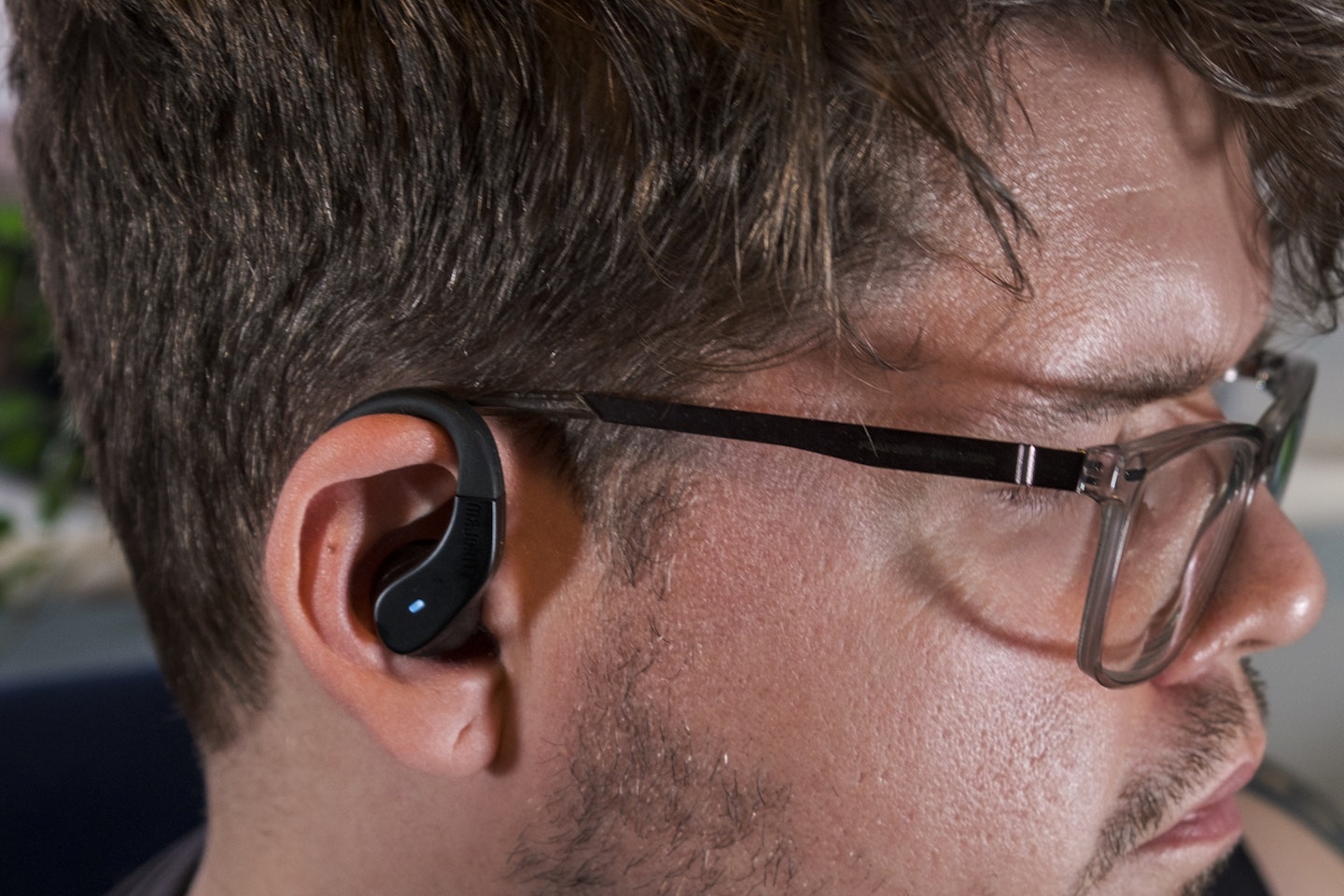
The Tru Sport TWS are the cheapest, and they sound it. That's not to say that the performance is terrible, just that JLab has it beat, and the OpenRocks have their own unique thing going on.
The main contention with the Tru Sport sound is that there is a bit of muddling in the frequencies between the bass and middle, and the highs aren't very well defined. In short, the clarity is a letdown. Guitars and drums all sit in the same register, coming across more like a wall of sound than distinct frequencies and instruments.
It's not all bad, though. The thickness of the undefined tone does give the music something of a pumping, punchy edge that's well suited to the sweat and iron-slamming of a deadlift. Would I choose these headphones to kick back and listen to tunes around the house? Probably not. But tonally, they have a rough energy that can carry my favourite hype tracks as I try for another PR.
JLab Epic Air Sport
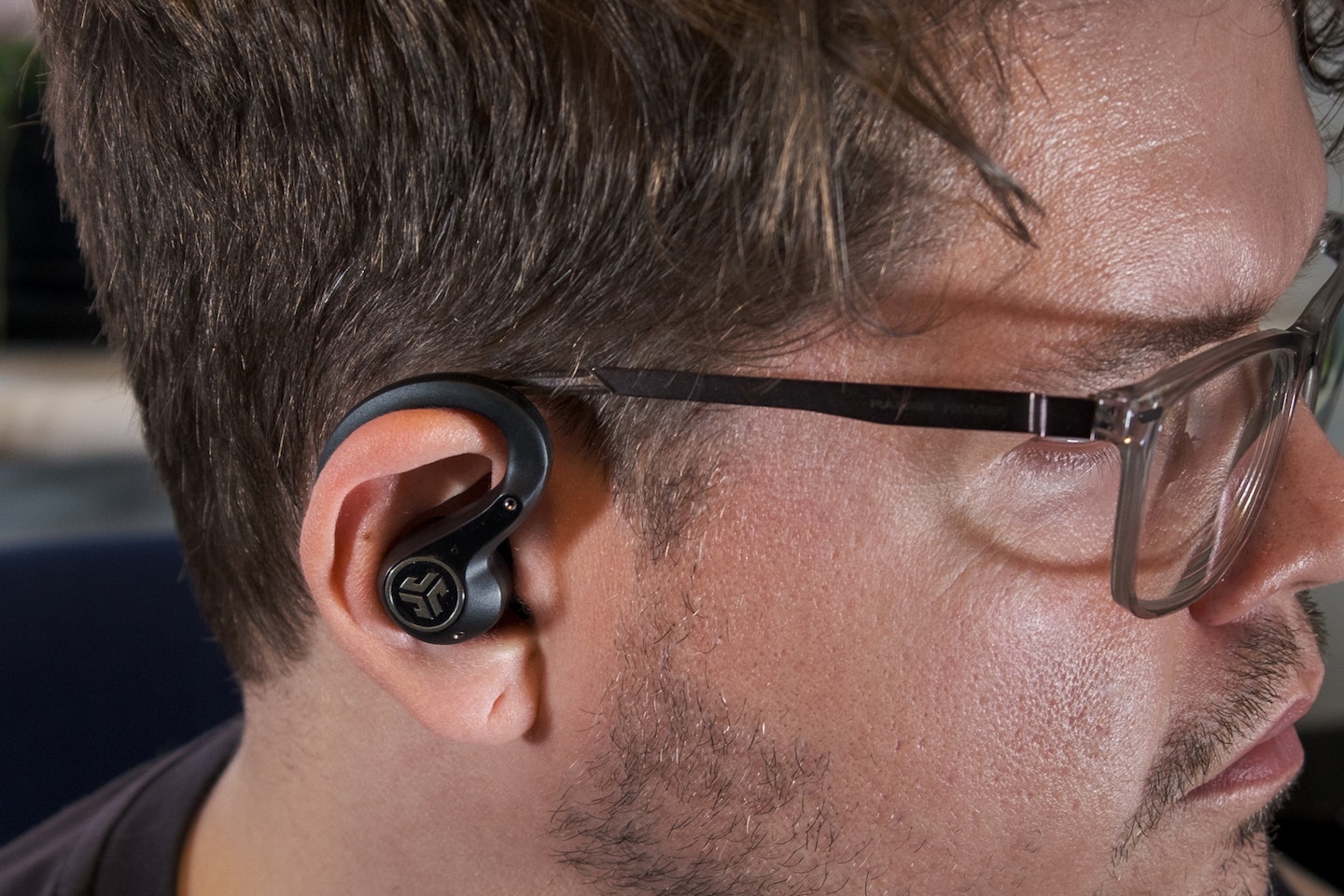
The JLab Epic Air Sport has a sound profile that lends itself to bassy tracks. While it lacks a little in clarity and instrument separation - especially when compared with the Samsung Galaxy Buds2 Pro I've been using since January - I can't deny that it's energetic. The pronounced bass and low mids make the earphones a fine companion for gym routines.
There is an app that allows you to modify your expereince. It does an okay job and if you are really focussed on dialling in the perfect sound, you may value spending time here. Personally, I didn't have enough of an issue with the base sound to warrent the clutter on my smartphone.
When strength training, I listen to heavy metal, and the JLab Epic Air Sport did a solid job of carrying over the brute force of death metal breakdowns; during cardio, I opt for dance and drum and bass, and the earphones did just as good a job here keeping my pace up with bassy beats. The voice performance is good, too. I used these while doing some DIY in the garden to listen to a podcast and found them to hit on a pleasing tone.
If pure volume excites you with exercise earphones, then the JLab has that covered in spades, too. I like my music loud, but even I had to call it at 70 percent volume.
OpenRock Pro
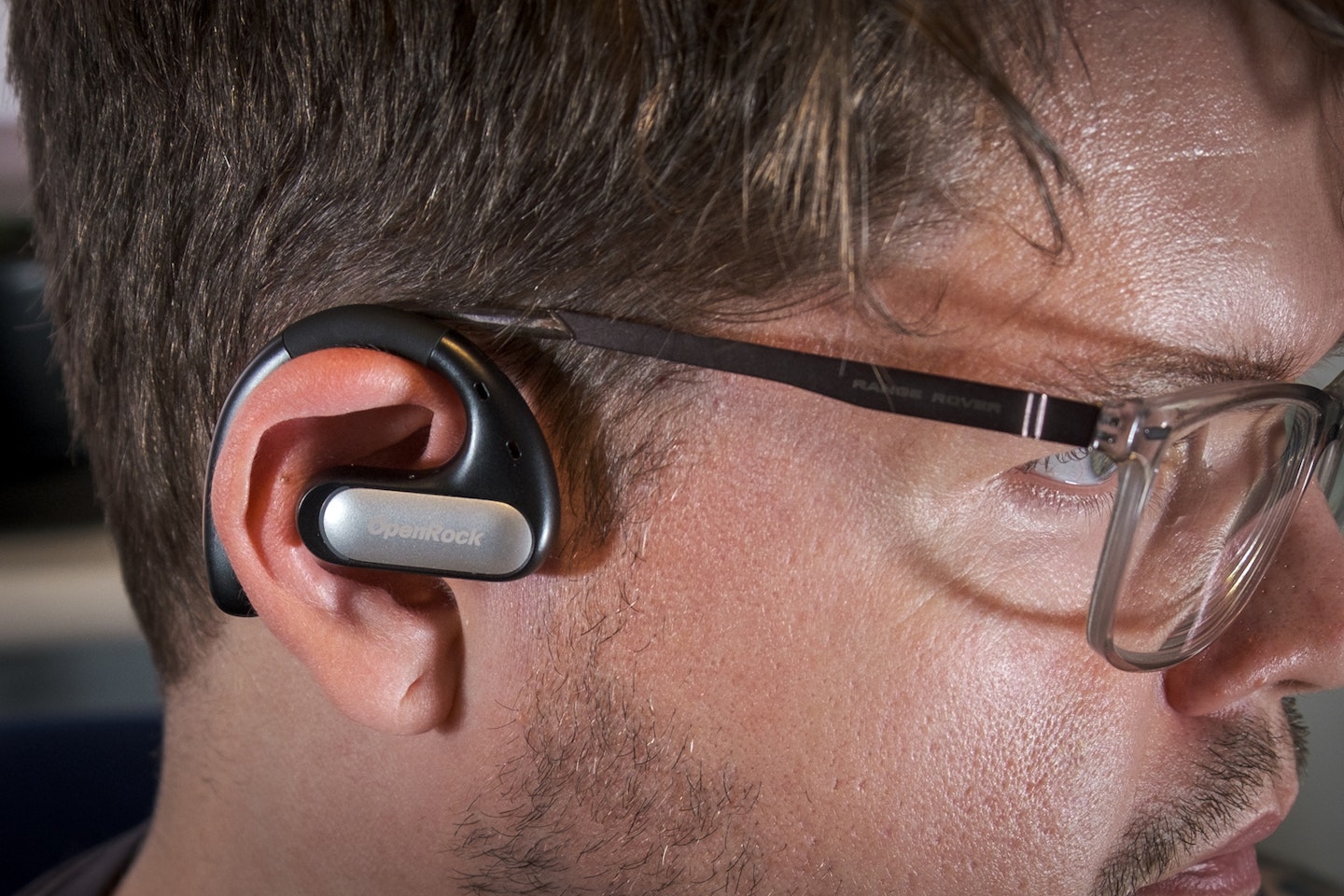
There's an essential distinction before donning a set of open-ear earphones. Different from most headphones, the primary function of these earphones is not to give you the best sound quality. It's to provide you with the best sound quality while maintaining total situational awareness.
At 50 percent volume, the sound is really good. It carries across bass well, richly balanced with mids and highs providing clarity. If you start to push them above half volume, you'll quickly find that what is gained in output is lost in quality. It's never atrocious, but the bass thins out. Clarity is affected, too, so songs with lots going on suffer. I found myself happy with the compromise of around 70 percent in environments I wanted the extra volume but stayed around the 50 percent mark most of the time.
A deeper look at the open-ear experience
The situational awareness of open-ear earphones is always a fun thing to experience - it's like having your very own movie soundtrack playing just for you. At the same time, life carries on as usual around you. Having near-unimpeded hearing of your surroundings isn't just fun; it's super helpful.
There are clear benefits for when you are exercising outdoors. Whether walking, running, or cycling, you can hear traffic or other pedestrians, improving safety for yourself and others. Picking open-ear earphones should be a no-brainer for outdoor use - hear-through modes on closed-ear options can't compete.
The shortcoming of open-ear earphones - and is present with the OpenRock Pro - is that they are pretty useless in public gyms where loudspeaker music competes with your earphones - or loud environments where adding some music over the top of bustling streets adds to the stress and gets a bit overwhelming.
At least with bone conduction headphones, you can always whack in some earplugs to drown out the world and still hear your music, on account of them using bones to transmit vibrations into your ear. No such hack exists with air conduction.
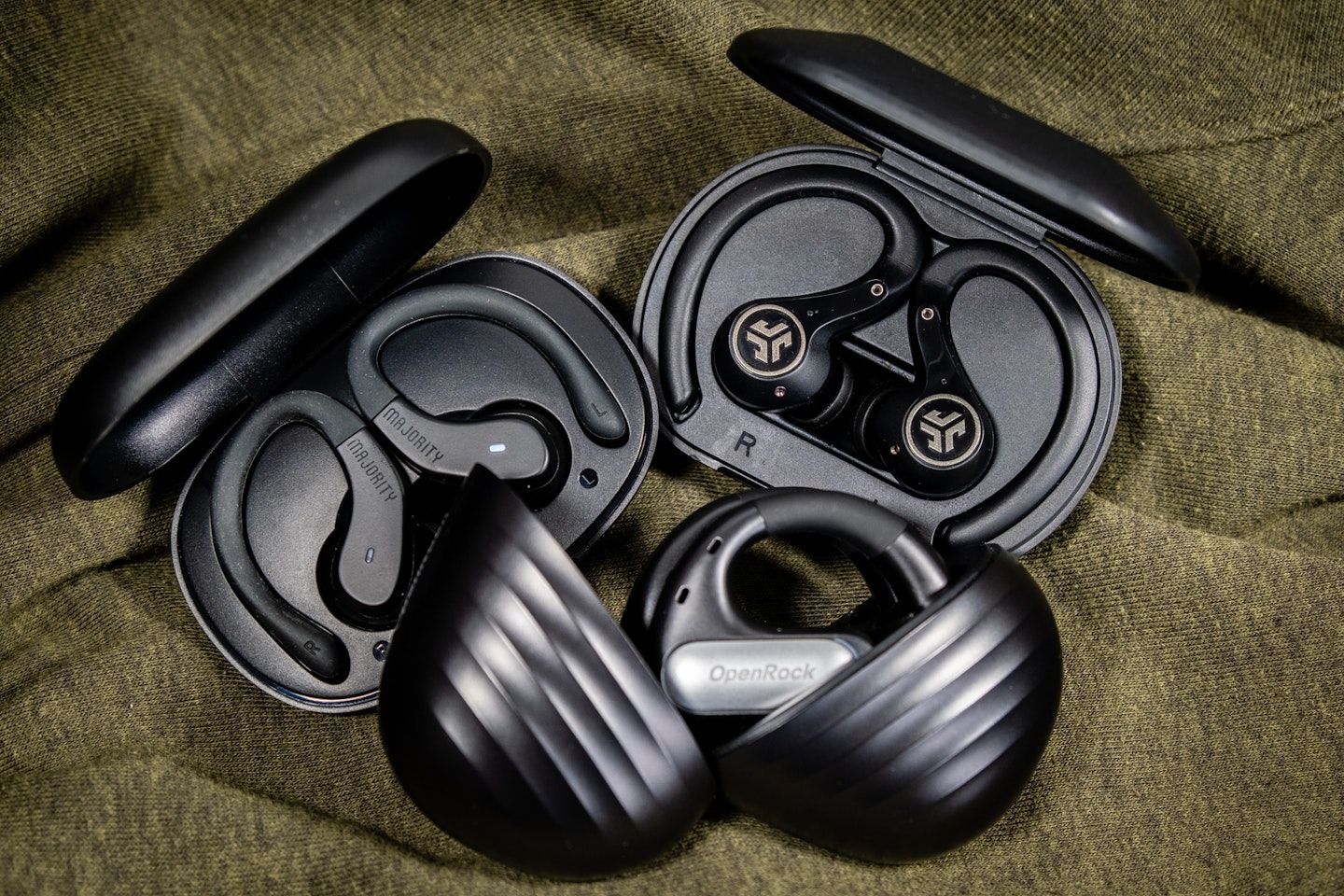
Price tag showdown
The Majority Tru Sport TWS retail for £42.95, but more often than not, are sitting on Amazon with a sizable discount, placing them in the £20-£30 bracket. I would say that for this price, they are worth getting if your budget is tight or you aren't bothered about the few sacrifices that you have to make with cheaper earphones.
The JLab Epic Air Sport ANC Air has an RRP of £99.99, and most of the year, you'll find them for this price. On occasion, a sale will drop them to around £60. In my experience, I would gladly say they are worth it at full price and a steal at the lower.
When considering the JLab Epic Air Sport ANC and the Majority Tru Sport TWS, the JLab earphones are worth the outlay over the Majority if you have the extra cash to spare. The JLab price is also easier to justify than the OpenRock Pro, which has more of a niche application - serial outdoor exercisers will find the higher price a better to swallow.
The RRP of the OpenRock Pro sits at £119.99. The earphones are one of the most expensive products OneOdio produces, which typically offers more traditional and budget-friendly headphones. While an outlier in-house, the price of the OpenRock put them right among open-ear industry leader Shokz and its bone-conduction headphones.
The comparable price between OneOdio and bone conduction competition is a blessing - your choice of open-ear headphones can be directed by preference rather than budget. As discussed above, the OpenRock Pro earphones are comfortable and deliver a likeable sound quality. As do Shokz headphones, as I discovered during my review of OpenMove - then known as Aftershokz OpenMove.
There are two main differences. One is the finishes - while there's nothing wrong with the OpenRock Pro, Shokz finishes its headphones in a rubberised material, which gives a consistently premium feel. However, bone conduction tech requires its headphones to be held at the side of the face, meaning they need a connecting band around the back of the head.
When deciding between open-ear and bone-conduction, the most significant consideration is whether you want true wireless, independent earphones or a pair with a connecting strap.
Final scores
Score: 3/5
Comfortable, lightweight and carrying an attractive price tag, I was rooting for the Majority to take the crown. However, the compromised sound and looser fit lost some points - still, if I had a sub-£30 budget during a sale event, I could do worse than these.
Pros
- Light design means no pressure on ears
- Affordable price point
- Decent battery life
Cons
- Middling sound performance
| Bluetooth | 5.3 |
| IP rating | IPX7 |
| Battery total | 30hr |
| Weight | 7g per headphone |
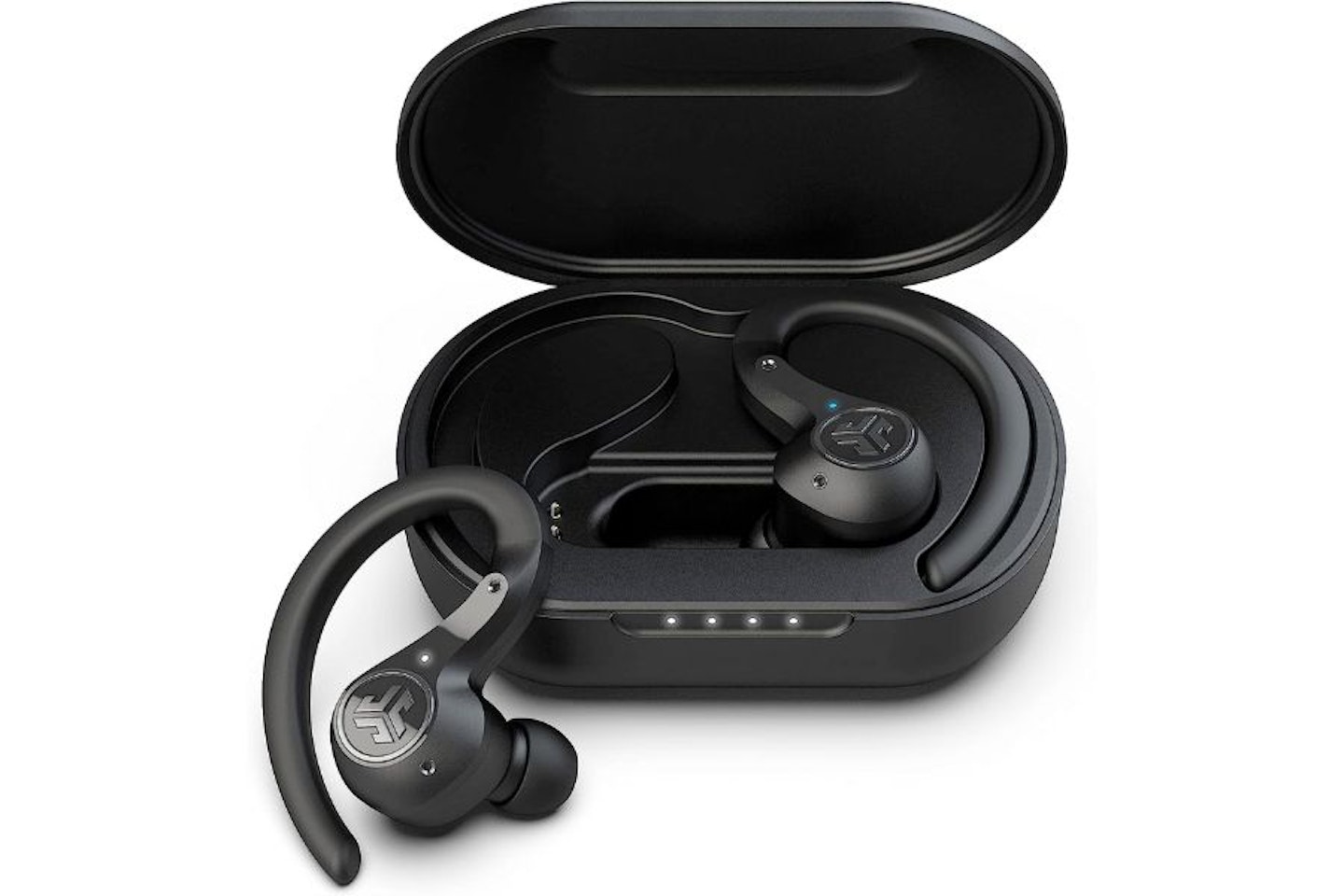
Score: 4.5/5
Slightly over-enthusiastic bass is a fair trade-off for earphones that are otherwise perfect for gym-goers. The fit and volume will keep the outside world at bay while you work through your sets, while the battery means you can forget about plug sockets for a quarter of the year.
Pros
- Exciting audio, despite bass bias
- Great fit throughout workouts
- Phenomenal battery
Cons
- Bit pasitc-y
| Bluetooth | 5 |
| IP rating | IP66 |
| Battery total | 70hr |
| Weight | 10.6g per headphone |
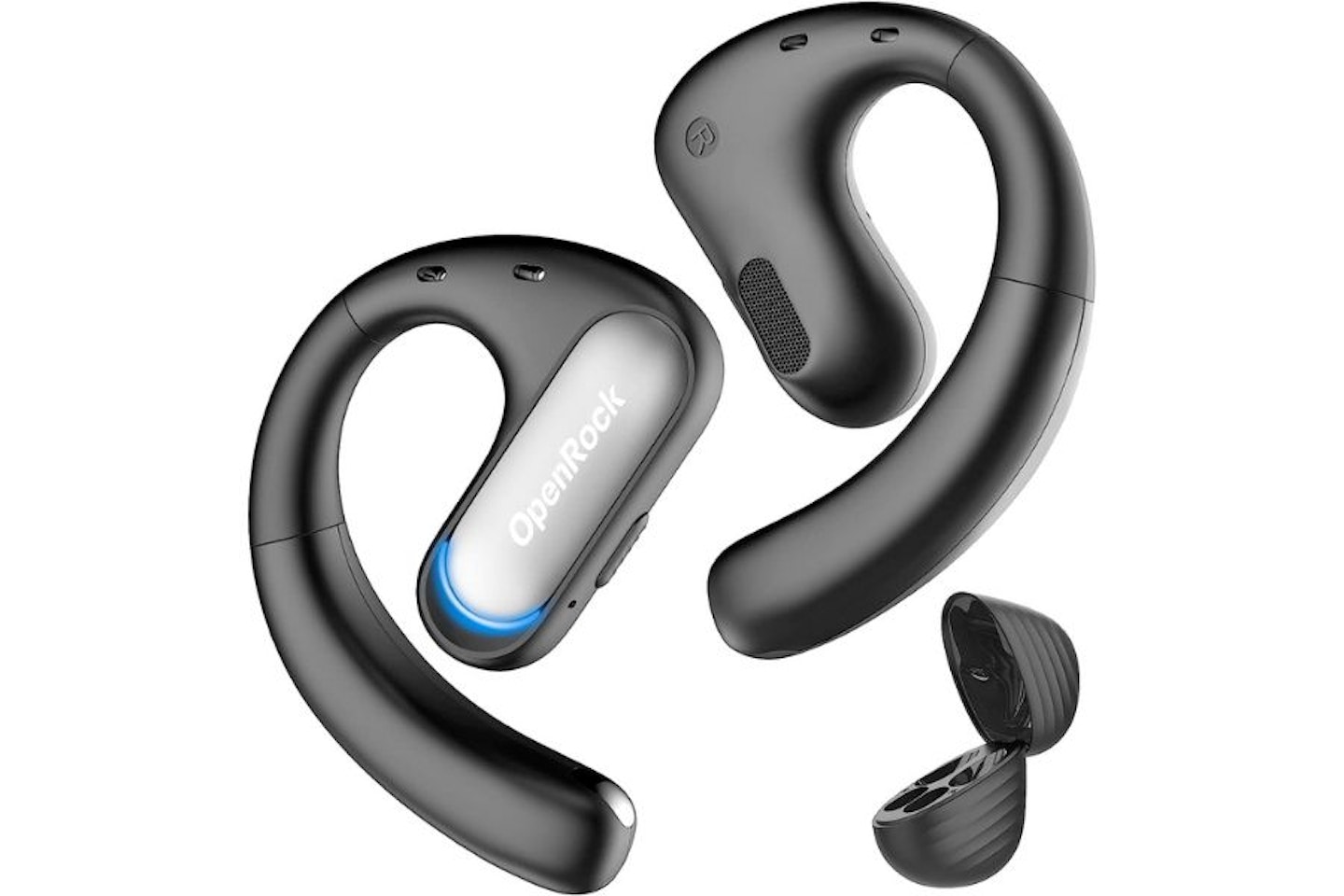
Score: 4/5
Ideal for outdoor cardio and daily use around the house or in the office, but the JLAB or Majority are more secure options for explosive HIIT sessions, CrossFit and strength training.
Pros
- Open-ear listening is awesome for situational awareness
- Decent audio perfromance considering tech
- Nice fit
Cons
- Open-ear isn't good for gyms
- Audio suffers at volume
| Bluetooth | 5.2 |
| IP rating | IPX5 |
| Battery total | 46hr |
| Weight | 13g per headphone |
Final thoughts
Winner: JLab Epic Air Sport
While the OneOdio OpenRock Pro is specialised for outdoor cardio, the JLAB is a more secure and aurally satisfying option for most exercise scenarios. If the near-£100 price tag is a bit steep, the Majority offer a similar experience for a fraction of the cost, albeit with slightly more compromised sound and security.
More items to consdier:
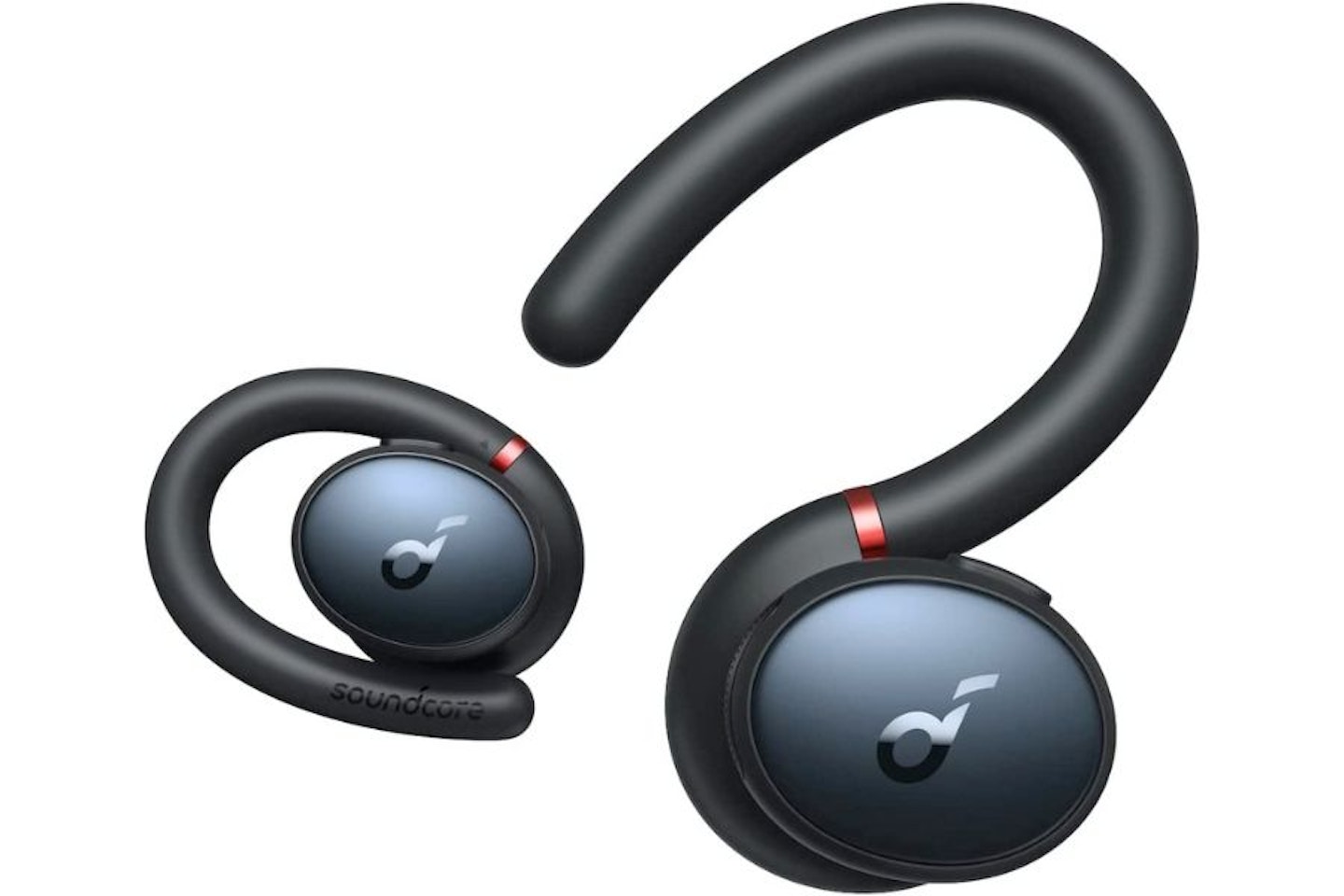
Our review verdict: "Adaptable earbuds that remain secure in all manner of workouts, plus great noise-cancelling for those moments where you want to drown out sounds."
Pros
- Sweatproof
- Secure fitting
- Noise cancelling
Cons
- Case durability
- Material peeled from earbuds
Our review verdict: "Simply the best."
Pros
- Clear and energetic audio
- Accomplished noise cancelling
- Well-balanced touch controls
- Cost less than Apple AirPods Pro 2nd Gen
Cons
- No hook to help stay in ear
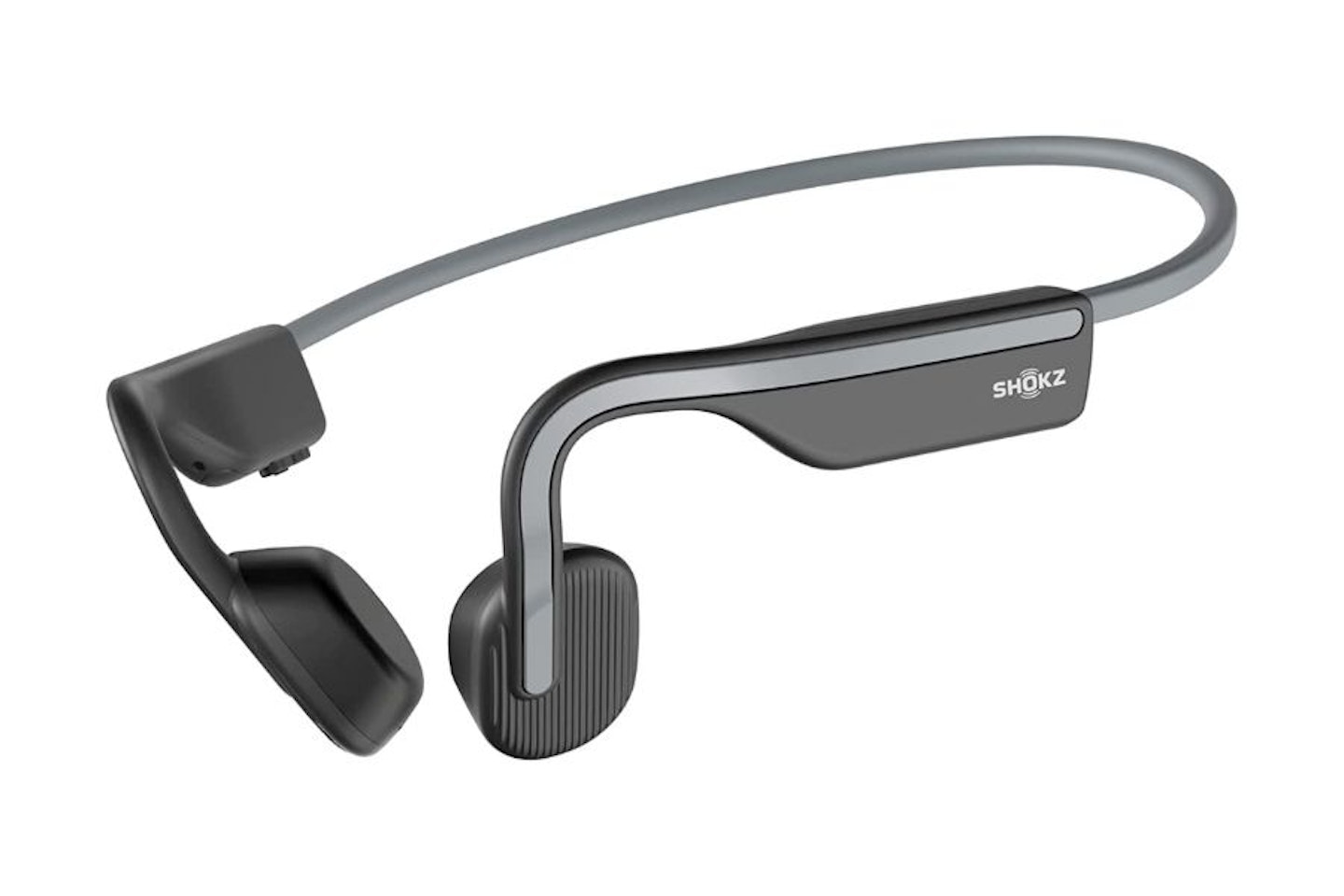
Our review verdict: "While they are not the headphones to pick up when you’re settling in to listen to the latest album from your favourite artist, the OpenMove is an excellent companion for exercise and work. Affordable, comfortable and convenient."
Pros
- Light and comfortable
- Great battery and user-functions
- Open-ear design is excellent for situational awareness
Cons
- Situational awareness sacrifices audio quality
Who tested it
William Lobley undertook this group test. William is the Deputy Tech & Fitness editor at What's The Best and has been with us since 2019. He regularly reviews products and has extensive experience testing earphones, earbuds and headphones.
Since 2022, Will's renewed interest in strength training and fitness has seen him take his reviewing skills into this new arena. After spending many months fiddling with earphones at the gym and trying to find some that stay in, he turned his gaze towards over-ear hook earphones. After searching the market, he realised that choice was scarce and unevenly distributed across price ranges - this tickled the reviewer in his brain, and he decided to perform a group test to see whether over-ear headphones were worth purchasing.
How we tested
Over three months, I conducted a comprehensive test, rotating design options into my exercise routine. I assessed their performance during runs, weightlifting, and everyday use. For running and weightlifting, I checked durability, comfort and sweat resistance. For day-to-day listening, I focused on audio quality and comfort during extended wear. This practical approach allowed for a well-rounded evaluation of each design's strengths and weaknesses.
William Lobley is the Deputy Tech & Fitness Editor for What's The Best. Here, he oversees, curates and researches listicles and reviews as many products as his home office can handle.
He has spent nearly five years writing about tech, audio, outdoors and fitness, and has reviewed everything from smartphones to ice baths. In addition, he's well-versed in sniffing out the best deals and savings the internet offers.
When not at his desk writing, reviewing or deal-hunting, he'll be relaxing with Japanese crime novels, bingeing some classic anime, strolling the countryside or at the gym listening to the heaviest metal Spotify has to offer.
Subscribe to the What’s The Best Newsletter to keep up to date with more of the latest reviews and recommendations from the rest of the What’s The Best team.
